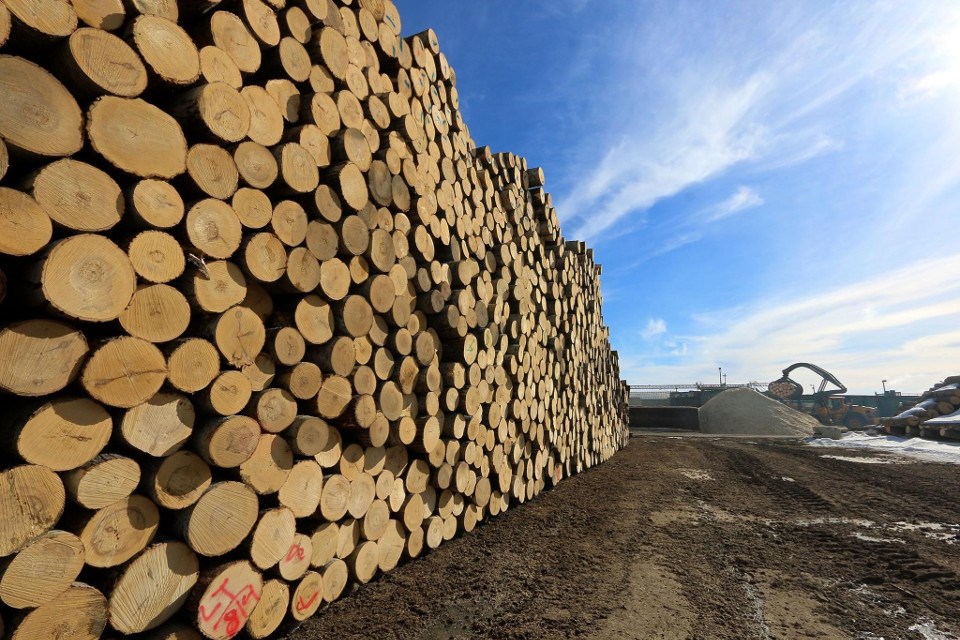Canada’s struggling forestry companies and its hard-hit sawmilling sector need federal support to get them through to the end of this year.
The crash of lumber prices, the pandemic-related halt to the North American economy, combined with the pain felt by softwood lumber tariffs over the last two years has many industry players facing a “brutal” next couple of financial quarters, said Derek Nighbor, president-CEO of the Forest Products Association of Canada (FPAC).
Nighbor appeared as a witness before the House of Commons Standing Committee on Finance on April 17 to lay out the landscape of what the industry is experiencing.
“We just need some help to keep our heads above water and keep as many people working as possible over the next few months,” he said. “The rest of 2020 is going to be about survival.”
FPAC represents Canada’s wood, pulp, paper, and wood bio-products manufacturers, a $73-billion industry employing 230,000 in northern and rural communities.
In recent weeks, lumber markets have plunged with a nearly 40 per cent drop in prices, causing the temporary closure of 39 sawmills across Canada, including 24 in British Columbia.
Newsprint and paper markets are also collapsing with offices, stores and schools locked up, and advertising revenues dropping.
Consumers have gotten a crash course in the importance of forestry when faced with toilet paper shortages (a 241 per cent jump in demand for producers this spring), the scarcity of sanitary wipes, and in learning how essential pulp is for the manufacture of protective masks and hospital gowns.
Nighbor called sawmills the “heartbeat” of a highly integrated sector that feeds pulp and paper mills.
The stoppage in wood chip production is already being felt downstream with a handful of pulp operations scheduling down time, despite their order sheets looking healthy.
“They can’t get the chips they need to make their in-demand products,” said Nighbor. “If we don’t have chips flowing, our industry’s biggest artery is cut off – and thousands more will be out of work.”
With log yards full coming out of the winter harvest, Nighbor said an improved wage subsidy program would go a long way toward being able to process those inventories.
“Our industry is not looking for a bailout, but rather bolstered cash flow supports to keep our businesses operating through these difficult next two to three quarters. “
In March, Ottawa introduced a 75 per cent federal wage subsidy, designed to soften the blow to employers caused by the pandemic.
The program will cover three-quarters of the salaries of any size company that can show their revenues dipped by at least 30 per cent due to COVID-19.
For many forestry players operating on the margins, being hit with a 30 per cent revenue drip would be “too late for some.”
He proposes more of a segmented, mill-by-mill, approach.
“If the government proposed a sliding scale where, let’s say, a 50 per cent subsidy would kick in at a 15-20 per cent revenue decline, for example, I know that would help keep more people working.”
But the wage subsidy is “by no means a magic bullet,” he added.
“Our biggest issue is liquidity – managing increased operating costs, working through falling prices and markets, and making our credit payments.”
In his remarks, Nighbor said he sees no evidence that the credit availability program, run through the federal Business Development Bank of Canada, “is going to deliver what we need.”
“We need liquidity supports now,” he said, with more risk-tolerant lending than is offered by the mainstream banks that can be quickly rolled out and not force companies to provide more security.
Looking ahead to next year and the post-COVID-19 recovery, prospects look considerably brighter, Nighbor said.
Wood is increasingly gaining favour as a renewable construction material of choice.
He expressed confidence that estimated $3.6-billion in softwood lumber tariffs, collected by U.S. government, will come back to Canadian producers on successful appeals through the trade tribunals.
While the demand for toilet paper is expected to level off, the demand for sanitary wipes and paper towels should remain strong.
And in the construction queue over the next 36 months, the industry has hundreds of millions of dollars in shovel-ready projects related to environmental performance improvements and on innovation side with new generation products in the bio-economy space.
– Northern Ontario Business
